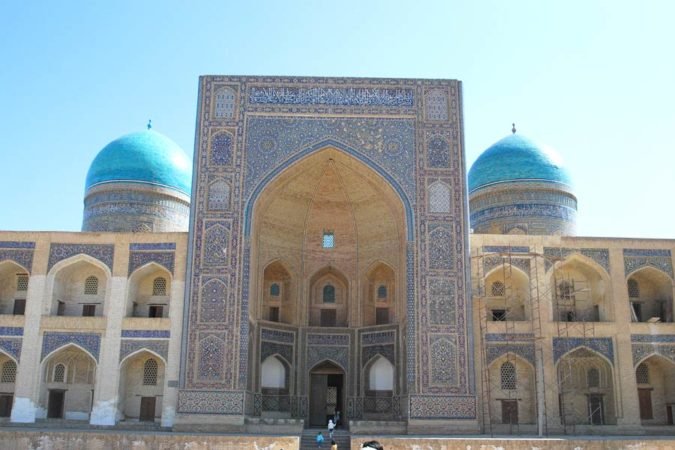India: The Need to Engage with Iran, Afghanistan and Central Asian Countries Collectively

On December 24, 2018, India took over the operations of the Shahid Beheshti Port in Chabahar, Iran. The development of this port is considered as an important step for India towards increasing its economic and strategic outreach in the region. Through the Chabahar Port project, India is developing a transit corridor that would provide it with access to Afghanistan and the Central Asian region.
For optimal results, however, the current nature of India’s bilateral engagements with Iran, Afghanistan and the Central Asian countries would require significant recalibration in order to engage with the three entities in a collective manner.
Core Factors Defining India’s Engagement
Historical, civilisational and cultural ties are common threads in India’s engagements with Iran, Afghanistan and the Central Asian region. These factors have dominated India’s contacts with these three entities since the establishment of diplomatic ties with each. However, while historical ties are a common thread, this has not resulted in India formulating policies aimed at collective engagement with the three entities in the related spheres. Nor has this soft power connection resulted in developing collective relations in the strategic sphere. On the regional level, India’s interactions with the three have, at times, been influenced by attempts at balancing New Delhi’s relations with the regions and New Delhi’s relations with other powers.
Apart from cultural ties, India’s relations with these three entities are characterised by a few specific separate considerations. Iran is one of India’s largest sources of energy imports. India is the second largest buyer of Iran’s oil after China. Oil trade between India and Iran has become a dominant feature after India adopted liberal economic policies and India’s demand for oil increased to supplement a growing economy.
On Afghanistan, both New Delhi and Kabul enjoyed close relations until the Afghan civil war and the Taliban rule. During the Taliban rule, relations between India and Afghanistan underwent a tumultuous phase. However, in the post-Taliban period, India-Afghanistan relations have been defined by India’s developmental assistance in Afghanistan.
Meanwhile, India’s relations with the individual Central Asian countries are fairly young given how the countries in the region came into existence only in 1991. For the most part, trade has been a common driving factor in India’s engagement with all five countries, though over the past few years, India has gradually also begun to participate in joint military exercises. Additionally, Tajikistan has been hosting Indian Air Force and Border Roads Organisation personnel at its Ayni air base. Overall, at present, India’s relations with Central Asian countries could be considered as being in a developing phase.
Impediments to India’s Strategy
While India enjoys cordial relations with Iran, Afghanistan and Central Asian countries, the lack of a coherent overarching strategy linking the individual bilateral relationships has resulted in India’s limited interaction with the abovementioned countries in a collective manner. A general impediment has been that more focus has been placed on soft power than hard power projection. There are three key elements that could be identified as impediments resulting in India’s lack of a uniform policy for collective engagement with Iran, Afghanistan and Central Asian countries. These three factors are: power play in the region, India’s limited manoeuvring in the maritime domain, and connectivity.
All the entities have been subject to intense power play between regional and extra-regional powers such as Russia, China and the US. India has largely remained outside the competition for strategic space in the region, and this has resulted in New Delhi being unable to gain a strategic footprint in the region.
India’s relative neglect of the maritime domain is another factor. Much like India not gaining room for strategic manoeuvring on land in any of the three areas, the state-of-affairs is the same in the maritime domain as well. Limited presence in the maritime sphere and absence of a well-defined maritime security policy has kept India away from gaining access to the regions.
India has always cited connectivity related shortcomings as a major factor that has prevented meaningful and deeper engagements, especially with Afghanistan and Central Asia. Since these entities are landlocked and can be accessed by land only through Pakistan and Pakistan-occupied territories, this adds to India’s obstacles in collective engagement.
India’s Prevailing Strategy
India’s prevailing strategy for engagement with Iran, Afghanistan and the Central Asian countries could be considered at two levels – India’s cooperation with regional and extra-regional powers having a stake in the region, and an Afghanistan-centric approach. India’s role in the region, particularly in Afghanistan, has been in cooperation with the US, and recently, with China after the Wuhan Summit. India is yet to expand its role in Afghanistan and in the entire region. On a multilateral level India, is part of the Ashgabat Agreement, the Heart of Asia Conference, the Shanghai Cooperation Organisation (SCO) and India-Central Asia Dialogue. The India-Central Asia Dialogue prominently highlighted Afghanistan’s political and security situation.
However, India’s present strategy has its share of challenges. If the Afghanistan-centric approach forms the basis of India’s engagement in the region, India does not yet have a strategy to handle the security situation in Afghanistan. By developing the Chabahar Port, India is trying to overcome its limited presence in the maritime connectivity domain. However, until such time New Delhi defines its role in Afghanistan, the Chabahar Port would yield limited advantage.
India has proposed a multilateral order in the Indo-Pacific as a counterbalance to China. New Delhi could consider a similar arrangement but aimed at collective engagement with Iran, Afghanistan and the Central Asian countries. An alternative arrangement would enable India to engage collectively with the three focus areas and thereby optimise the actualisation of India’s policy objectives vis-a-vis each individual relationship.
This article was originally published by the Institute of Peace and Conflict Studies, IPCS, New Delhi


















